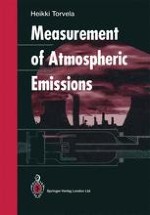1994 | Buch
Über dieses Buch
Due to the threat of a possible global climate change and the greenhouse effect caused by constituents of anthropogenic origin in the atmosphere, air quality has become a major environmental issue. As a consequence, emissions into the atmosphere need to be monitored and controlled. Measurement of Atmospheric Emissions presents technologies for emission control and analysis from industrial and energy plants. The author explains the physical and chemical basis before proceeding to the practical performance. This publication provides the reader with the knowledge necessary to critically analyze and investigate emission measurement techniques. It will be of great interest to researchers and engineers in the fields of environmental technology and air pollution control. It will assist in the choice of the most appropriate instruments for various purposes and circumstances.
Anzeige
